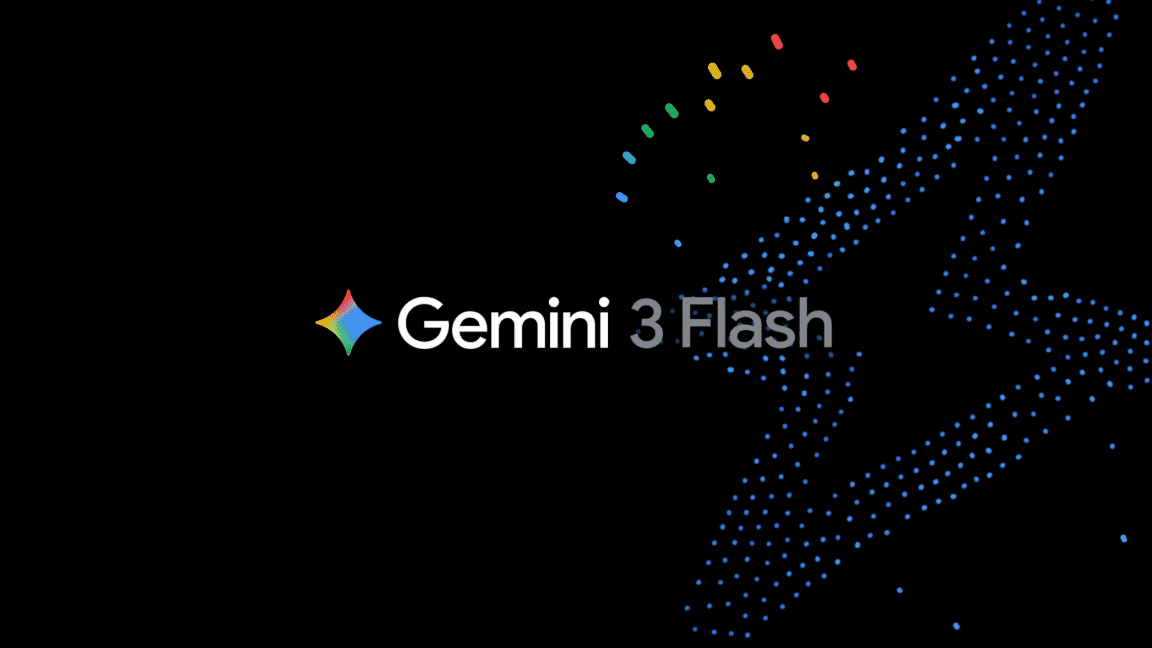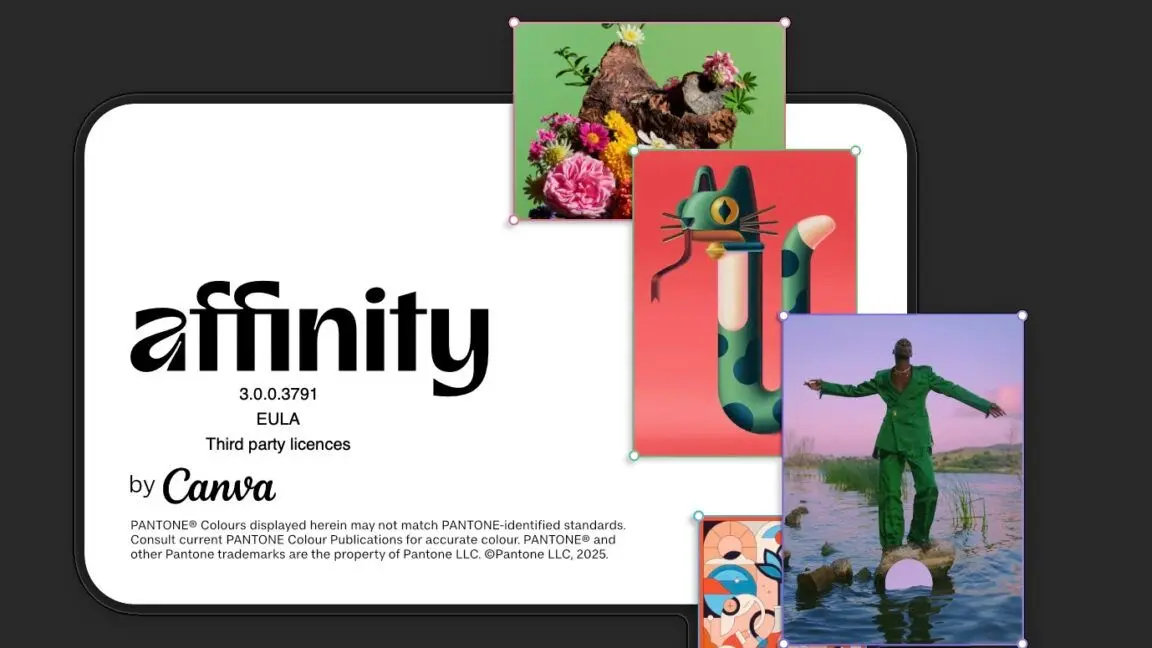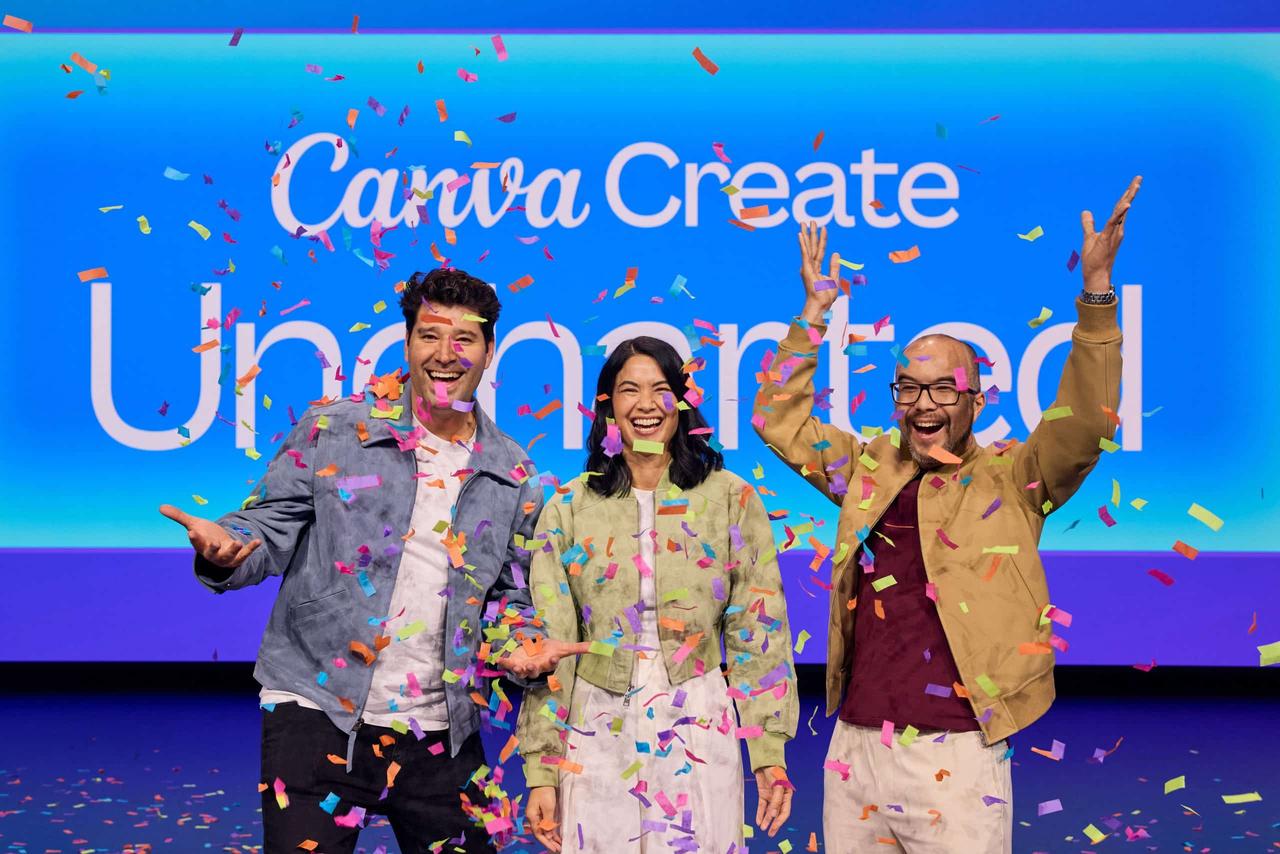Canva Unveils Dream Lab: A New AI-Powered Image Generation Tool
6 Sources
6 Sources
[1]
Canva Will Now Let You Generate AI Images With Its New Dream Lab Feature
Canva is also integrating its platform with Google Workspace Canva announced a new text-to-image artificial intelligence (AI) generation tool and added several new features to its Visual Suite on Wednesday. The Sydney-based visual communications platform introduced AI image generator Dream Lab, a platform that was built on the tech stack of Leonardo.Ai, just three months after it was acquired. Additionally, it also added new tools such as Magic Write, polls and quizzes, interactive charts, and AI-powered whiteboards to Visual Suites. The company is also expanding Work Kits to teachers, students, and small business owners. The new Dream Lab, an AI-powered text-to-image generator that can create photos and graphics to help users quickly find the right image for their projects, was announced by the company on Tuesday. The image generation tool is powered by Leonardo.Ai's Phoenix foundational model and offers various use cases. While the visual communications platform already offers a Stable Diffusion-based AI image generator to users, Dream Lab offers its unique capabilities to users for both creating high-definition images as well as having granular control over the generated content. Dream Lab can generate multiple variations of an image in more than 15 different styles based on a text prompt. These styles also include 3D renders and illustrations. The context-aware AI model can also generate multi-subject images as well as photorealistic portraits. Additionally, users can also add an image as a style reference to have more control over the output. Canva also announced several new tools and features for Visual Suite, a collection of tools for content creation across various formats including documents, videos, presentations, and more. The company upgraded several existing tools and added new tools based on requests from its community. The AI-powered whiteboard has been updated with the ability to sort and summarise text. An interactive Reaction Stickies has also been added that allows collaborators to vote on ideas in real-time. Magic Write is also getting an upgrade with contextual text generation capability which can generate more accurate output as well as refine generated text with a single click. For videos, Canva has introduced new animation effects and auto-generated captions. The latter can be matched to brand style with a few clicks. Presentations is also getting updated with new interactive chart types and advanced animation effects. Further, a new tool dubbed Custom Mockups has been added which can turn photos into on-brand mockup templates with a single click. Another new tool called "polls and quizzes" has also been added. Users can create customisable polls and quizzes directly in the editor with this tool. Canva is also making it easier to access the Visual Suite by integrating it with Google Workspace via Gmail, Google Drive, Calendar, Docs, and more. Separately, Work Kits, the collection of tools, templates, and resources for specific teams in organisations, is also being expanded. Canva stated that it will offer Work Kits to small business owners, teachers, and students. Each of the groups will get customised resources to help them in creating useful visual content.
[2]
Canva unveils new image generator powered by Leonardo.ai
Leonardo.ai partnership bears fruit with new text-to-image generator Canva has launched a new text-to-image generator based on the Phoenix foundation model technology it acquired earlier in 2024 with the purchase of Leonardo.ai. Canva claims the new Dream Lab tool can generate up to 15 different types of graphics, including 3D renders and illustrations, and can also reference other images to fine-tune outputs, making its outputs more reliable. It's also capable of generating multi-subject images and photorealistic portraits. The unveiling of Dream Lab comes as Canva's popularity continues to soar - it now boasts 200 million monthly users, marking a 130% year-over-year increase. The company's annual revenue also recently hit $2.5 billion, which is coincidentally also the number of presentations that its users have made. The announcement, detailing a number of product launches and enhancements, also sees the company boast about the 10 billion uses that its Canva AI tools have seen to date - a jump of three billion since the Leonardo.ai acquisition. As part of its drive, Canva is also rolling out more than 40 new features across its Visual Suite, including updates to Canva Docs, enhanced video editing tools and the introduction of interactive features like polls, quizzes and dynamic charts. Furthermore, recognizing its growing userbase in the UK, Canva has opened up two new buildings in Hoxton Square, London, tripling the size of its campus in the city.
[3]
Canva introduces new Dream Lab featuring Leonardo.ai image generation
With so many AI text-to-image generators on the market, it is difficult to stand out. However, Leonardo.ai can produce high-quality renditions that have even earned it a spot on ZDNET's best AI image generator roundup, and now it's available in Canva. On Tuesday, Canva launched a new Dream Lab powered by Leonardo.AI, which the company acquired three months ago. The Dream Lab will be a hub for all text-to-image or graphic needs, leveraging Leonardo's Phoenix foundational model. Also: Gartner's 2025 tech trends show how your business needs to adapt - and fast Users can use text to generate content in over 15 styles, including 3D renders and illustrations, using reference and even multi-subject images. The Dream Lab will also enhance the quality of the outputs generated by the Magic Studio, which includes tools like Magic Design, Magic Media, Background Remover, Magic Eraser, and more. Canva's content library of over 100 million photos, graphics, audio, and templates expanded even further with Artlist's Premium Video Library and 150,000 photos from Pocstock's library. Combining the expansive content library with high-quality image generation from within the platform should give designers seemingly endless possibilities. The graphic design tool also has a slew of other new features, according to Canva, including Custom Mockups, which turns photos into on-brand mockup templates; Polls and quizzes, which allow sixers to create customizable polls in the editor; and the ability to collaborate on Canva directly within Google Workspace. Also: Google's viral AI podcast generator just got more customizable, so I put it to the test Many existing features got a facelift, too, including Whiteboards, Magic Write, and Presentations. Canva did not share details on when to expect the new features, including Dream Lab. If you want to try Leonardo.ai in the meantime, it is free to access and easy to use by visiting the standalone site.
[4]
Canva Is All-in With AI: An Overview of the Fresh Features in Its Toolbox
After years of trailing behind Adobe, Canva is becoming a big-name brand in creative software. The company implemented AI tools in 2023 and combined them into the Magic Studio shortly after. And as we reach the end of 2024, Canva has even more AI offerings for its users. ✕ Remove Ads High-Fidelity Generative AI in Canva On October 22nd, 2024, Canva introduced Canva Dream Lab -- teased under the name "Droptober" -- a generative AI tool for high-fidelity generative outcomes. This will change the game when it comes to creating images using AI. The quality is much higher, the results are more impressive, and your workflow improves tenfold. Dream Lab uses Leonardo.AI's Phoenix foundational model -- which Canva acquired in July of 2024 -- to create powerful generative imagery, including photos and graphics. We have some tips for improving your Canva AI-generated images, but with this new update, you might not even need them. ✕ Remove Ads Users will have more control over the output of their generated images, including creating multiple generations and being offered many different texture outputs. You can use an uploaded image as a style reference to help get the output you require in terms of set visuals. Adding multi-subject offerings changes the game for compositing within Canva's AI. Generate the background first and follow it by adding elements in or around the image, without the need to make your prompt more complex. This allows you to generate photorealistic results, fast. Incredible New Upgrades to Canva ✕ Remove Ads Although some new features are already available to Canva users, the coming weeks will bring exciting new tools and features on top of those recently added. Expect new generative and contextual writing tools within Canva's Magic Write feature, AI summarizing and organizational tools within the Whiteboard feature, and many improvements within Canva Video, Docs, Presentations, and more. Not only are AI tools, unsurprisingly, seeing a huge boost in Canva's expanded offerings, but there are also new features within the already-strong content library, including partnerships with Artlist and Pocstock, and music-inspired template collections to name a few. These add to the already great list of apps available in Canva. You'll get even more templates and stock, including videos, photos, audio, cinematic videos, and inclusive imagery within your Canva account. Adding to that, you'll find access to polls and quizzes, AI-generated whiteboards, interactive charts, custom mockup templates, and advanced animation tools -- adding to Canva's already fantastic animation offerings. ✕ Remove Ads Great News for Schools and Small Businesses Using Canva Canva has always offered affordable plans to schools, educational institutes, and small businesses. But this update offers even more to help boost the creative economy and learning, namely an expansion of the Work Kits collection, which is already popular with over a million uses as a tool in the app. This helps teachers with their work and small business owners expand their businesses in ways that matter. More templates, more lesson plans, and more assets all in the same place Canva's Business and Education users love: Work Kits. End Your Year With Canva Dream Lab and More ✕ Remove Ads Some of Canva Dream Labs tools are rolling out at different times, with some already being released at the stroke of midnight on October 22nd -- and the rest following later the same day and in the following weeks. Canva aims to improve workplace communication and collaboration -- and it doesn't matter whether you use Canva solely for your job or for fun. The new tools and features fit seamlessly into Canva's existing bustling toolbox, cementing it as fierce competition for Adobe -- despite the updates announced at Adobe Max 2024. Each Canva update has brought major enhancements, from boosting your workflow with new AI features to expanding the asset library. Canva Dream Lab is no different, allowing users even more creative freedom while saving time. ✕ Remove Ads
[5]
Canva CEO Melanie Perkins talks new AI tools, reverting prices, and competing with Adobe
Canva shows no signs of slowing down. Last year, the creative tools company was the first major player to integrate generative AI into its core workflow. That AI has been used 10 billion times since, during a time of considerable growth for the company. Canva has added 75 million more users since (to reach 200 million total), increased revenue to $2.5 billion a year, and released a complete design overhaul to its Visual Suite. Today, Canva is going a few steps further. Along with dozens of updates around core product functionality, it's revealed a completely new AI tool called Dream Lab, which lets you generate images with a text prompt, in one of 15 preset styles. While Canva kicked off its approach to generative AI by integrating it deep into the UX of workflows (so you could create an image or generate text right inside a presentation you were working on), Dream Lab lives more superficially as its own stand-alone tab inside Canva. In this side channel, you generate higher quality images built upon a model by Leonardo AI (a company Canva acquired only three months ago), which stack atop each other like a creative timeline. Dream Lab is, quite frankly, the more typical approach to presenting generative AI. It's a focused space for AI, set front and center to grab the attention of anyone opening the app, rather than more slickly snuck into the UI. But according to Melanie Perkins, cofounder and CEO at Canva, it's still about letting users create what they want to create as quickly as possible.
[6]
Adobe Competitor Canva Used by 95% of Fortune 500 Companies
Canva continues its torrid pace, announcing Dream Lab, a generative artificial intelligence (AI) tool, alongside significant upgrades to Canva's Visual Suite, content library, and solutions for small businesses and students. Only three months after Canva acquired generative AI company Leonardo, it has built a new tool using Leonardo.Ai's technology: Dream Lab. Using Leonardo's Phoenix foundational model, Dream Lab enables Canva users to transform simple texts into AI-generated photos and graphics. Dream Lab allows users to generate multiple variations of their ideas in more than 15 styles, including 3D renders and illustrations. Beyond text prompts, users can also select an existing image to use as a style reference to more precisely control the look of the output. "Canva joined forces with Leonardo.Ai to bring even more powerful AI capabilities to creative professionals. Millions of users, from content creators to professional designers, architects, and film directors, trust Leonardo.Ai for its cutting-edge quality and flexibility," Canva explains. The company says that by combining Dream Lab with its other features, like Magic Studio and a content library with more than 100 million assets, users have access to "an endless supply of content." Speaking of Canva's vast content library, the company announced new global partnerships with leading content studios Artlist and pocstock, bringing even more assets to Canva users. Through Artlist's Premium Video Library, Canva now offers music and cinematic video assets from top artists. As for pocstock, this new partnership adds 150,000 photos to Canva. Throughout its rapid growth, Canva targeted small businesses, individuals, and students. That's still true, as they remain vital parts of Canva's user base. Still, the company has significantly expanded its enterprise efforts to try to siphon off more of Adobe's robust enterprise business. Alongside unveiling Dream Lab and expanding its content library, Canva shared insights into the company's performance that show just how big Canva has become. Canva has more than 200 million users worldwide every month and achieved an annualized revenue of $2.5 billion. Within Canva's Visual Suite, users have created over 500 million documents and assets for more than 2.5 billion presentations. Canva says its users make 300 new designs every second. As for its broader business efforts, Canva Enterprise launched five months ago and is now used for many large companies, including the NYSE, Atlassian, HP, Snowflake, DHL Express, and DocuSign. More impressively, Canva claims that 95% of Fortune 500 companies use its software. "We're incredibly excited to now be empowering more than 200 million people in nearly every country across the globe. From over 95% of the Fortune 500 to millions of small businesses, classrooms and nonprofits, it's certainly an exciting milestone but we feel we're still just 1% of the way there," says Melanie Perkins, Canva's Co-Founder and CEO, "As we double down on empowering everyone to turn their ideas into designs, we're introducing dozens of new features across our Visual Suite at the intersection of creativity and productivity. From more interactive designs to a suite of AI-powered upgrades, we hope these new features help our community to continue achieving their goals." Canva is free to use for individuals, although there are paid subscriptions with access to premium features. Canva Teams and Canva Enterprise are both paid subscriptions, with the precise cost determined by the size of the team and specific needs.
Share
Share
Copy Link
Canva introduces Dream Lab, a new AI image generation tool powered by Leonardo.ai, along with several updates to its Visual Suite, marking a significant advancement in AI-driven creative tools.

Canva Introduces Dream Lab: A New Frontier in AI Image Generation
Canva, the popular visual communications platform, has unveiled its latest innovation in AI-powered creativity: Dream Lab. This new text-to-image generation tool marks a significant leap forward in Canva's AI capabilities, leveraging technology from its recent acquisition of Leonardo.ai
1
.Dream Lab: Powered by Leonardo.ai's Phoenix Model
Dream Lab is built on Leonardo.ai's Phoenix foundational model, offering users the ability to generate high-quality images across more than 15 different styles, including 3D renders and illustrations
2
. The tool's capabilities extend to creating multi-subject images and photorealistic portraits, providing users with unprecedented control over their generated content3
.Enhanced Features and User Control
One of Dream Lab's standout features is its ability to use reference images as style guides, allowing for more precise outputs. Users can generate multiple variations of an image based on a single text prompt, offering a range of creative possibilities
4
. This level of control and versatility sets Dream Lab apart in the competitive landscape of AI image generators.Expanding the Visual Suite
Alongside Dream Lab, Canva has introduced over 40 new features to its Visual Suite. These updates include:
- AI-powered whiteboards with text sorting and summarization capabilities
- Magic Write upgrades for more accurate contextual text generation
- New animation effects and auto-generated captions for videos
- Interactive chart types and advanced animation effects for presentations
- Custom Mockups tool for creating on-brand mockup templates
- Polls and quizzes feature for interactive content creation
1
Integration and Expansion
Canva is also expanding its reach through integration with Google Workspace, allowing users to access Visual Suite directly from Gmail, Google Drive, Calendar, and Docs. Additionally, the company is extending its Work Kits to small business owners, teachers, and students, providing customized resources for creating visual content
1
.Related Stories
Impressive Growth and User Adoption
Canva's AI tools have seen remarkable adoption, with over 10 billion uses to date. The platform now boasts 200 million monthly users, marking a 130% year-over-year increase. This growth is reflected in Canva's annual revenue, which has reached $2.5 billion
2
5
.Canva's Vision for AI-Driven Creativity
Melanie Perkins, Canva's co-founder and CEO, emphasizes that the introduction of Dream Lab and other AI features is aimed at enabling users to create what they want as quickly as possible. This approach aligns with Canva's broader strategy of integrating AI deeply into its platform to enhance user workflows and creative possibilities
5
.References
Summarized by
Navi
Related Stories
Recent Highlights
1
Google launches Gemini 3 Flash as default AI model, delivering speed with Pro-grade reasoning
Technology

2
OpenAI launches GPT Image 1.5 as AI image generator war with Google intensifies
Technology

3
OpenAI launches ChatGPT app store, opening doors for third-party developers to build AI-powered apps
Technology








